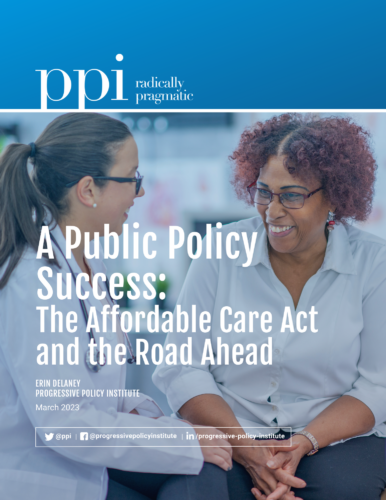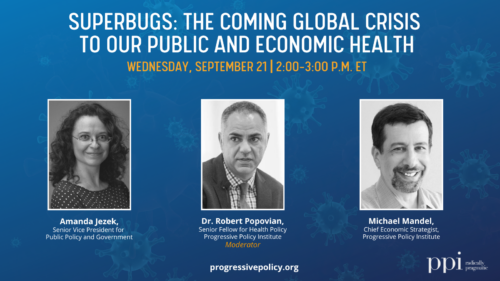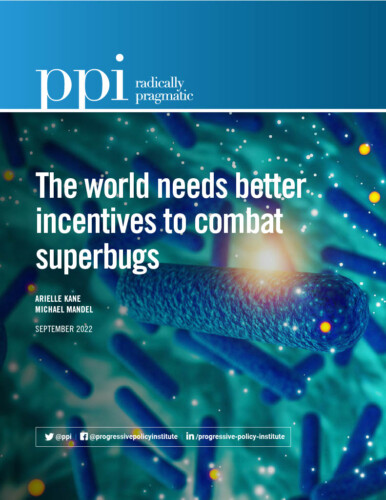North Carolina has officially become the 40th state to expand Medicaid under the Affordable Care Act (ACA), which is expected to be implemented in 2024 after the state budget is approved, likely this summer. Once implemented, an estimated 600,000 people will be eligible for coverage under the expansion. PPI applauds Governor Roy Cooper for his persistent leadership to garner bipartisan support to ensure North Carolinians have the health care access they deserve through Medicaid expansion. The North Carolina House passed expansion in an 87-24 vote last week, with nearly two-thirds of House Republicans voting in favor.
The path to expansion in North Carolina was no simple feat, as North Carolina Republicans have been staunchly opposed to expansion for over a decade since it’s a policy that was implemented by the Obama administration through the ACA 13 years ago. In fact, GOP members of the North Carolina legislature were so opposed to expansion that they passed a law in 2013 to prevent the governor from even seeking expansion without approval from the General Assembly. The GOP attitude on preventing expansion in North Carolina began to change once they realized Congressional Republicans were not going to succeed in repealing or replacing the ACA in 2017, or raising the state match that coverage requires. Additionally, in May 2022, longtime expansion opponent, State Senate Leader Phil Berger, publicly expressed his support for expansion and framed it as a sensical budget move and one that would help those who fall in the coverage gap whose income is too high to qualify for Medicaid, but too low to benefit from highly subsidized private insurance.
Both chambers of the North Carolina legislature initially passed Medicaid expansion in 2022 but were unable to reach an agreement on the specifics of the state’s Certificate of Need (CON) regulations. An agreement was reached to loosen the CON regulations this year, which also helped pave the way for the expansion’s passage. Notably, the American Rescue Plan (ARP), the $1.9 trillion stimulus package that was passed by Congress and signed into law by President Biden in 2021, allows newly expanded Medicaid states to receive additional federal Medicaid funding for their non-expansion population. North Carolina will now receive this additional funding from the ARP for the first two years of the expansion.
Under the ACA, Medicaid coverage was expanded for adults with incomes up to 138% of the federal poverty level (FPL). This provision was initially a requirement, but became optional after the June 2012 Supreme Court ruling in National Federation of Independent Businesses v. Sebelius, permitting states to choose to opt into expansion or not. With North Carolina now expanding Medicaid, 40 states, including the District of Columbia, have expanded the program. Ten states remain as hold-outs: Alabama, Florida, Georgia, Kansas, Mississippi, South Carolina, Tennessee, Texas, Wisconsin, and Wyoming. Before North Carolina expanded, South Dakota recently expanded Medicaid in 2022 in a referendum, and will start implementation in July 2023.
How Medicaid expansion will benefit North Carolina:
- 600,000 North Carolinians will be eligible for coverage;
- North Carolina hospitals provide roughly $1 billion in uncompensated care each year. This amount will sharply decline once Medicaid expansion is implemented and the uninsured patients that can opt into Medicaid are covered;
- North Carolina Medicaid expansion will create 40,000 new jobs in North Carolina and will help keep rural hospitals open;
- North Carolina will receive $8 billion in annual federal funding with no additional cost to the state along with an additional $1.8 billion to support behavioral health, public safety support, rural health care and other needs. The state left $5.9 billion in federal funding by not expanding Medicaid in 2022.
This data clearly demonstrates what non-expansion states are missing out on. Medicaid expansion is a state revenue generator, a job creator, lowers health care system costs, and most importantly, provides access to health care for low-income and marginalized communities, decreasing health disparities. An estimated 3.7 million people, including non-Hispanic Black people, young adults, and women of reproductive age would gain coverage in 2023 if these remaining hold-out states expanded Medicaid eligibility. It’s high time for Republican lawmakers in non-expansion states to come to the consensus that Medicaid expansion is more than worth setting aside futile partisanship over the ACA. They should look to North Carolina as an example of what is possible when Republicans put aside their opposition to the ACA and reconsider the state budgetary and health benefits of expansion. Americans are still facing financial hardship, incalculable loss, and long-COVID illnesses and disabilities due to the COVID-19 pandemic, which also wreaked havoc on our health care system. Medicaid expansion can provide access to affordable health care and greater financial stability that many Americans desperately need now.





